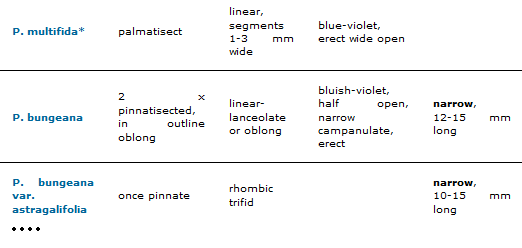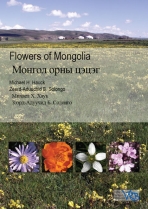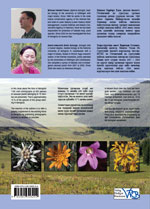Administrative Division of Mongolia
(Data Sources: Tserennyam 2007a, b)
All geographical names are transcribed from the Mongolian original spelling acc. to Encyclopaedia Britannica, Inc. (1997) and UNGEGN: United Nations Group of Experts on Geographical Names (2003).
data compiled by: A. Zemmrich
Romanization Rules for Mongolian Cyrillic Characters applied by FloraGREIF
acc. to Encyclopaedia Britannica, Inc. (1997) for the Russian alphabet and for Mongolian special characters acc. to UNGEGN: United Nations Group of Experts on Geographical Names (2003)
|
|
|||
| Cyrillic characters | Equivalent Latin characters | ||
|
|
|||
| А | а | A | a |
| Б | б | B | b |
| В | в | V | v |
| Г | г | G | g |
| Д | д | D | d |
| Е | е | E | e |
| Ё | ё | YO | yo |
| Ж | ж | ZH | zh |
| З | з | Z | z |
| И | и | I | i |
| Й | й | Y | y |
| К | к | K | k |
| Л | л | L | l |
| М | м | M | m |
| Н | н | N | n |
| О | о | O | o |
| Ө | ө | Ö | ö |
| П | п | P | p |
| Р | р | R | r |
| С | с | S | s |
| Т | т | T | t |
| У | у | U | u |
| Ү | ү | Ü | ü |
| Ф | ф | F | f |
| Х | х | KH | kh |
| Ц | ц | TS | ts |
| Ч | ч | CH | ch |
| Ш | ш | SH | sh |
| Щ | щ | SHCH | shch |
| Ъ | ъ | omit | omit |
| Ы | ы | Y | y |
| Ь | ь | omit | omit |
| Э | э | E | e |
| Ю | ю | YU | yu |
| Я | я | YA | ya |
|
|
|||
References
Encyclopaedia Britannica, Inc. (1997): Table 32: The Russian alphabet. In Chapter: Languages of the world. In: Macropaedia – Knowledge in Depth. Vol. 22 of The New Encyclopaedia Britannica. Chicago: p. 681.
UNGEGN: United Nations Group of Experts on Geographical Names (2003): Report on the current status of United Nations romanization systems for geographical names. Compiled by UNGEGN Working Group on Romanization Systems. Version 2.2, January 2003. http://www.eki.ee/wgrs/rom2_mn.pdf
data compiled by: A. Zemmrich
List of place frequently visited by German Excursions
There are some german locality descriptions of mongolian places, that frequently come up at herbar labels.
| Name | Geogr. Details |
| „ehemalige Saurierausgrabungsstätte“, Ömnögov, Nemegt-Senke former dinosaur excavation site, Ömnögov, Nemegt-Valley |
E 100°26′ / N 43°29′, decimal degrees: E 100,4333 / N 43,4833 prec: 1 km (?), Province: Ömnögöv, District: Gurvantes |
| „Kloster Manzhir bei Zuunmood nahe Ulan Bator“ monastery Manzhir near Zu unmood close to Ulaanbataar |
Either: Bayan Tsag on the northern edge of Ömnögov Aimag, Servey Sum, N 44°08.536; E. 103°43.206. Or: Khermen Tsav on the western edge (Gurvantes Sum). very remote place. N 43°28.006 / E 99°49.976 |
| „Tereldzh, Schildkrötenfelsen/Touristenlager oder in der Nähe“y Tereldzh, turtle rock / tourist camp or the vicinity |
NE of Ulaan Baatar (Khentej), N: 47,91° E: 107,42° |
| Orkhon-Wasserfall Överkhangay, Khudzhirt Orkhon-Waterfall Överkhangay, Khudzhirt |
N 46,77848246 E 101,9807982 |
| Granitfeld (Magma-Basalt-Feld?) bei Khudzhirt Granite field (Magma-basalt-field?) near Khudzhirt |
coordinates missing Province: Överkhangay, district: Khuzhirt (?) |
| Adlerschlucht Yolin Am im Gurvan Saikhan Eagle Canyon in the Gurvan Saikhan |
N 43°29.180 / E 104°03.200, Province: Ömnogov, District: Khankhongor |
| Gurvan-Sajchan uul, Dzun Sajchan uul südlich Elijn am (Yolyn-am) | Province: Ömnögov, district: Bayandalay |
| Chögnö Tarnijn chijd Khugne-Tarniyn-Khiyd |
N 47,46895 E 103,730164 |
| Canyon des Chuluutijn gol canyon of Chuluutiyn-Gol river |
N 48,19241902 E 100,3675373 |
| Tsingeltey | N 47,940727 E 107,059708 |
| Töchmijn nuur Tukhmiyn-Nuur |
N 46,905246 E 104,982605 |
| Estiyn-Gol | N 48,488397 E 107,745667 |
| Chorgo Vulkan Khorgo volcano |
N 48,19241902 E 99,92591132 |
| Erdene-Zuu | N 47,21560719 E 102,8376823 |
| Tsagaan-Nuur | N 48,170894 E 99,84375 |
| Zuun Sajchan uul, Elijn am Zuun-Saykhan-Uul, Eliyn-Am |
N 43,459897 E 104,304199 |
| Dund Sajchan uul Dund-Saykhan-Uul |
N 43,64456211 E 103,7346766 |
| Tarvagataj Tarvagatay-Nuruu Mountains |
N 48,20392976 E 99,4065545 |
| Paß Egijn davaa (2.250m) Egiyn-Davaa mountain pass (2250m) |
N 47,218985 E 99,999447 |
| Zuramtay-Uul | N 43,06894341 E 103,1420556 |
| Chataj-Suutal (1410m) | N 44,4426251 E 101,0795193 |
| Khugsho-Uul | N 43,28069521 E 101,6792287 |
| Tost-Uul | N 43,19828859 E 100,6409053 |
| Narandac Chudag Narandaats-Khudag |
N 43,47023044 E 100,3360008 |
| Ich Chürmen uul | N 44,37169647 E 103,8488666 |
| Ich Chajrchan uul | N 46,899616 E 105,974121 |
| Delgerchangaj uul Delgerkhangay-Uul |
N 45,2179663 E 105,085442 |
These german names are often mentioned on herbar labels, therefore the current aimak name is given.
- Zentral-Aimak = Töv
- Südgobi-Aimak = Ömnögov
- Gobi-Altai = Gov-Altay
- Mittelgobi = Dundgov
- Ostgobi = Saynshand
- Ost-Aimag, Östlicher Aimag = Dornod
Technical Terms
We would like to offer you additional information:
Botany
- advanced keys, taxon check lists
- collectors, herbaria etc.

Geography
- WebGIS
- administrative division etc.

Informatics
Information on the implementation of the Content Management System FloraGREIF
Miscellaneous
- transription guideline used in our project
Book Review: Hauck M. H. & Solongo Z. B. „Flowers of Mongolia“
Hauck M. H. & Solongo Z. B.: Flowers of Mongolia / Mongol orny c c g.
– Telgte: Biermann, 2010.
– ISBN: 978-3-9813082-0-4.
– 325 S., zahlr. Abb., Harteinband.
– Preis: EUR 69,-.


Veröffentlicht in: Willdenowia 41, Buchbesprechungen / Book reviews, pp. 197-200(4)
„Endlich, eine Bilderflora der Mongolei! Das gerade erschienene Werk enthält 435 Arten und damit immerhin bereits 15% der mongolischen Flora. Zusammen mit der virtuellen Datensammlung zur Flora der Mongolei (https://floragreif.uni-greifswald.de/), wo aktuell 1009 Arten in Bildern (Scans von Herbarbelegen und Fotos) präsentiert werden, ist ein bemerkenswerter Anteil der mongolischen Flora mit Farbfotos abgedeckt. Von den Autoren wird diese Internet-Seite aber leider nicht zitiert.
1182 Farbfotografien von 435 Arten der Höheren Pflanzen aus 75 Familien sind in dem neuen Werk enthalten. Die Intention der Autoren ist es, durch aussagekräftige Fotos eine anschauliche Ergänzung zu den vorhandenen Florenwerken (Grubov 1982, 2001, 2008: Key to the vascular plants of Mongolia; Gubanov 1996: Conspectus of flora of Outer Mongolia; regionale Werke z.B. Flora Khangaya, auf russisch) der Mongolei anzubieten. Die Fotos sind in vier Gruppen gegliedert: Pteridophyta, Gymnospermae, Dicotyledonae und Monocotyledonae. Innerhalb dieser Gruppen sind die Familien und in den Familien die Arten alphabetisch angeordnet.
[…]
Artnamen und Synonyme der relevanten Literatur, Informationen zu typischen Habitaten und Vegetationstypen sowie kurze Kommentare finden sich im 2. Teil des Buches. Bestimmungsmerkmale sich nicht enthalten. Diesbezüglich muss man weiterhin auf das Grundlagenwerk von Grubov (s.o.) zurückgreifen, das im Querschnitt sehr gute, brauchbare Schlüssel und praktische, kurze, auf bestimmungsrelevante Merkmale fokussierte Beschreibungen enthält und damit ohnehin nicht leicht zu übertreffen ist. Die Verbreitung in der Mongolei wird in Form von Nummern, die sich auf die phytogeographischen Regionen von Grubov beziehen, angegeben. Den Gebrauchswert des Werkes beeinträchtigt, dass Fotos und Kommentare in getrennten Buchbereichen liegen.
Insgesamt ein gelungenes Werk für Mongolen, Deutsche oder des Englischen mächtige Botanikfreunde. So können wir uns auf die geplanten Erweiterungsbände mit hoffentlich vielen Fruchtdetails freuen.“
Sabrina Rilke
PLANTS Database
URL: http://plants.usda.gov/adv_search.html
The PLANTS Database provides standardized information about the vascular plants, mosses, liverworts, hornworts, and lichens of the U.S. and its territories.
Plants of Texas Rangelands
URL: http://essmextension.tamu.edu/plants/
This website provides a description, identifying characteristics, the geographic distribution and a habitat description of species found on Texas rangelands, along with photographs of the plant and its distinguishing features. Information on the most common toxic plants in the state, including signs of poisining and controlling these plants.
asianflora.com
URL: http://www.asianflora.com/sommaire2.htm
Pictures of asian plants, research by family and genus name
Pictures of botanical expeditions
botanic.jp
URL: http://botanic.jp/index.htm
Site written mainly in Japanese, partly translated into English
Pictures of Plants, browse by latin name, japanese name or common name
Join us
You are interested in the Flora of Mongolia? You want to share your knowledge and/or your collection on mongolian plants with internet users worldwide?
For more information see:
Project FloraGREIF: Key to a Virtual Flora of Mongolia (Flyer, PDF)
| herbarium | number of mongolian herbarium specimens hosted and made publicly available (last update: 10/2014) |
| GFW | 3.313 |
| B | 308 |
| LE | 180 |
| OSBU | 1.687 |
| HAL | 11.653 |
| GAT | 200 |
| private herbarium H. v. Wehrden | 67 |
| private herbarium K. Wesche | 207 |
| Müritzeum | 111 |
| private herbarium K.F. Günther | 354 |
| private herbarium S. Rilke | 478 |
Pick your family or genus from the list above and contact us: florafloragreif.uni-greifswald.de
Please note: plant images are always welcome if they fit our requirements: (1) authors allowance (2) high resolution image file (3) plant characteristics are perceptible (4) date and location are given.
Useful advices for photographers:
- a scale next to the plant is helpful, e.g. a coin or a ruler
- different views on the same plant are helpful (top view, front view, habitat view)
- the inflorescence is often the most impressive part, but in order to identify the specimen a closer look at the leaves, stem, and habit is unavoidable
| family | editor(s) | photographer(s)* |
| Adoxaceae | S. Rilke, July 2009 | |
| Alismataceae | S. Rilke, January 2012 | |
| Alliaceae | N. Friesen 2012; A. Zemmrich & N. Friesen 2008 | M. Kretschmer, 2003, 2006 |
| Amaranthaceae | ||
| Apiaceae | K.F. Günther, in preparation | M. Kretschmer, 2003, 2006; M. Schnittler, 2003, 2006 |
| Apocynaceae | S. Rilke, August 2010 | |
| Araceae | ||
| Asclepiadaceae | S. Rilke & E. Dauber, August 2010 | |
| Asparagaceae | ||
| Asphodelaceae | ||
| Aspidiaceae | ||
| Aspleniaceae | ||
| Asteraceae | M. Kretschmer, 2003, 2006; Y. Novozhilov 2007; M. Schnittler, 2003, 2006 | |
| Artemisia | M. Schnittler, in preparation | |
| Cichorieae (excl. Hieracium) | N. Kilian | |
| Saussurea | E. Raab-Straube | |
| Athyriaceae | ||
| Balsaminaceae | S. Rilke, June 2009 | |
| Berberidaceae | ||
| Betulaceae | ||
| Biebersteiniaceae | S. Rilke, November 2008 | |
| Bignoniaceae | ||
| Boraginaceae | S. Rilke, April 2014 | M. Kretschmer, 2003, 2006 |
| Botrychiaceae | ||
| Brassicaceae | M. Kretschmer, 2003, 2006 | |
| Butomaceae | S. Rilke, June 2009 | |
| Callitrichaceae | S. Rilke, May 2009 | |
| Campanulaceae | ||
| Cannabaceae | S. Rilke, July 2009 | |
| Capparaceae | ||
| Caprifoliaceae | S. Rilke & S. Starke, November 2012 | |
| Caryophyllaceae | G. Laskov, February 2013 | M. Kretschmer, 2003, 2006; M. Schnittler, 2003, 2006 |
| Celastraceae | ||
| Ceratophyllaceae | S. Rilke, July 2009 | |
| Chenopodiaceae | M. Kretschmer, 2003, 2006; M. Schnittler, 2003, 2006; M. Stubbe 2004 | |
| Agriophyllum | S. Rilke | |
| Atriplex | S. Rilke 2010, A. Sukhorukov 2012 | |
| Axyris | S. Rilke | |
| Ceratocarpus | S. Rilke | |
| Kalidium | S. Rilke | |
| Krascheninnikovia | S. Rilke | |
| Salsola | S. Rilke | |
| Suaeda | H. Freitag & M. Lomonosova, February 2011 | |
| Convallariaceae | ||
| Convolvulaceae | ||
| Cornaceae | ||
| Crassulaceae | ||
| Cryptogrammaceae | ||
| Cupressaceae | ||
| Cuscutaceae | ||
| Cynomoriaceae | S. Rilke, June 2009 | |
| Cyperaceae | M. Schnittler, January 2011 | M. Kretschmer, 2003, 2006 |
| Dipsacaceae | S. Rilke, June 2009 | |
| Droseraceae | S. Rilke, August 2014 | |
| Elaeagnaceae | S. Rilke, July 2009 | |
| Empetraceae | S. Rilke, April 2009; 2014 | |
| Ephedraceae | H. Freitag & M. Maier-Stolte, April 2009 | |
| Equisetaceae | S. Rilke & S. Starke, October 2012 | |
| Ericaceae | ||
| Euphorbiaceae | ||
| Fabaceae | M. Kretschmer, 2003, 2006; M. Schnittler, 2003, 2006 | |
| Astragalus | D. Podlech, 2009-2011 | |
| Frankeniaceae | S. Rilke, March 2009 | |
| Fumariaceae | S. Rilke & S. Starke, March 2012 | |
| Gentianaceae | S. Rilke & K. Ungethüm, June 2013 | M. Kretschmer, 2003, 2006; M. Schnittler, 2003, 2006 |
| Geraniaceae | S. Rilke, January 2009 | |
| Grossulariaceae | S. Rilke & S. Starke, March 2012 | |
| Haloragaceae | S. Rilke, July 2009 | |
| Hemerocallidaceae | ||
| Hippuridaceae | S. Rilke, July 2009 | |
| Huperziaceae | ||
| Hypecoaceae | S. Rilke, July 2009 | |
| Hypericaceae | S. Rilke, February 2009 | |
| Hypolepidaceae | ||
| Iridaceae | ||
| Juncaceae | S. Rilke & S. Starke, August 2014 | |
| Juncaginaceae | S. Rilke, June 2009 | |
| Lamiaceae | A. Weitkunat & S. Rilke, 2014 | M. Kretschmer, 2003, 2006; M. Schnittler, 2003, 2006 |
| Lemnaceae | ||
| Lentibulariaceae | ||
| Utricularia | Jost Casper, 1975 | |
| Liliaceae | ||
| Linaceae | ||
| Lycopodiaceae | ||
| Lythraceae | ||
| Malvaceae | S. Rilke, March 2009 | |
| Melanthiaceae | Rilke: March 2012 | |
| Menispermaceae | S. Rilke, June 2009 | |
| Menyanthaceae | S. Rilke, July 2009 | |
| Molluginaceae | ||
| Monotropaceae | ||
| Najadaceae | S. Rilke, June 2009 | |
| Nitrariaceae | ||
| Nymphaeaceae | S. Rilke, July 2009 | |
| Onagraceae | ||
| Orchidaceae | S. Rilke, August 2012 | M. Vesper, June 2007 |
| Orobanchaceae | H. Uhlich, February 2013 | |
| Pedicularis | P. Kuss, 2011 | |
| Oxalidaceae | ||
| Paeoniaceae | S. Rilke, May 2010 | |
| Papaveraceae | P. Hanelt, May 2010 | |
| Parnassiaceae | ||
| Peganaceae | ||
| Pinaceae | S. Rilke, in Preparation | M. Schnittler, 2003, 2006 |
| Plantaginaceae | ||
| Plumbaginaceae | ||
| Poaceae | S. Rilke & S. Starke, 2010 | M. Kretschmer, 2003, 2006; M. Schnittler, 2003, 2006 |
| Eragrostis | H. Scholz, 2010 | |
| Stipa | M. Nobis, 2014 | |
| Polemoniaceae | ||
| Polygalaceae | S. Rilke & S. Starke, August 2014 | |
| Polygonaceae | A. Zemmrich, 2009; S. Rilke, 2014 | M. Kretschmer, 2003, 2006 |
| Polypodiaceae | ||
| Portulacaceae | ||
| Potamogetonaceae | ||
| Primulaceae | M. Kretschmer, 2003, 2006 | |
| Pyrolaceae | S. Rilke, 2014 | |
| Ranunculaceae | S. Rilke, July 2010 | M. Kretschmer, 2003, 2006; M. Schnittler, 2003, 2006 |
| Rhamnaceae | S. Rilke, February 2009 | |
| Rosaceae | S. Rilke & S. Starke, 2013 | M. Kretschmer, 2003, 2006; M. Schnittler, 2003, 2006 |
| Rubiaceae | ||
| Rutaceae | S. Rilke, April 2012 | |
| Salicaceae | M. Kretschmer, 2003, 2006 | |
| Populus | Anne Petzold, March 2012 | |
| Santalaceae | ||
| Saxifragaceae | ||
| Scheuchzeriaceae | ||
| Scrophulariaceae | s. Rilke & E. Heinrich, July 2014 | M. Kretschmer, 2003, 2006 |
| Selaginellaceae | ||
| Sinopteridaceae | ||
| Solanaceae | ||
| Sparganiaceae | ||
| Tamaricaceae | S. Rilke, May 2009 | |
| Thelypteridaceae | ||
| Thymelaeaceae | S. Rilke, July 2009 | |
| Trilliaceae | ||
| Typhaceae | ||
| Ulmaceae | ||
| Urticaceae | S. Starke & S. Rilke, January 2014 | |
| Valerianaceae | E. Dauber & S. Rilke, in preparation | |
| Verbenaceae | S. Rilke, July 2009 | |
| Violaceae | ||
| Woodsiaceae | ||
| Zannichelliaceae | S. Rilke, February 2012 | |
| Zygophyllaceae | S. Rilke, June 2014 |
*comlete list of photographers: S. Breckle, E. & M. Dauber, H. Freitag, M. Hauck & B. Solongo, W. Hilbig, E. Jäger, F. Joly, M. Kretschmer, G. Laskov, F. Mark, F. Montfort, Y. Novozhilov, D. Pietsch, S. Rilke, M. Schäffler, E. Schlunegger M. Schnittler, M. Stubbe, U. Timmermann, M. Vesper, K. Wächter, D. Wächter, T. Weiss, A. Zemmrich (last update: 10/2014)
listings and text by: S. Rilke & U. Najmi





















